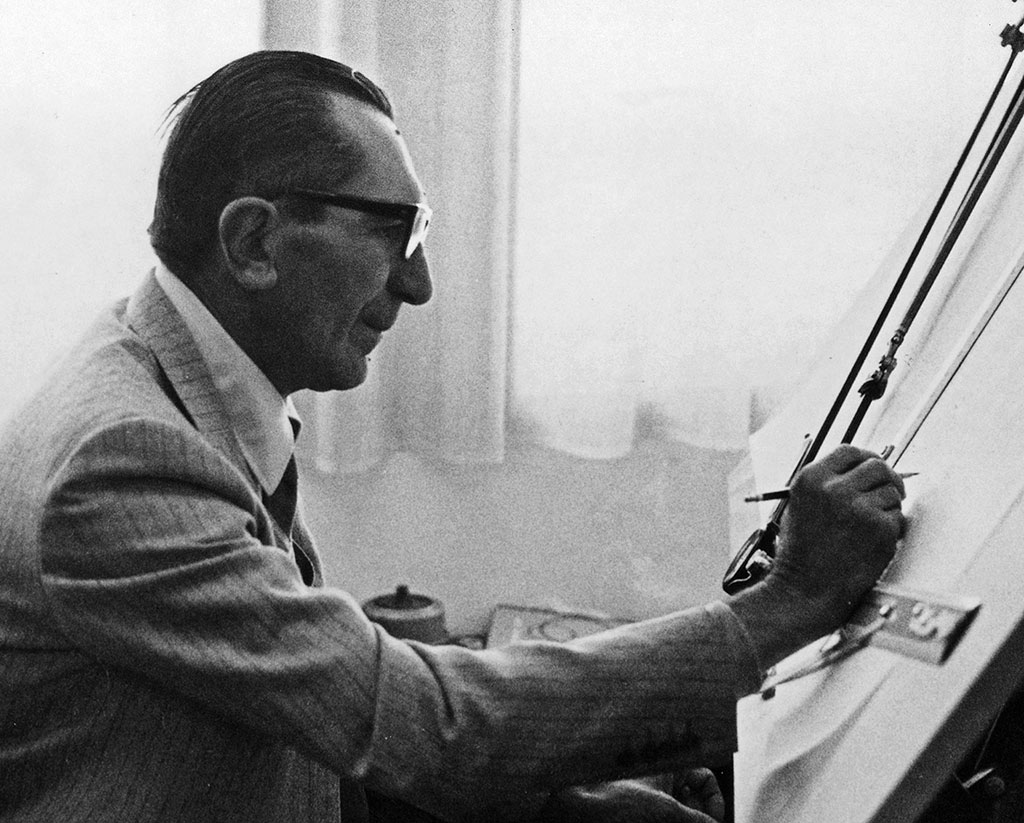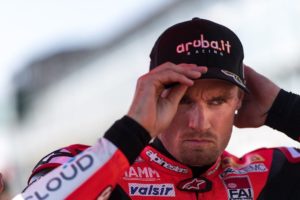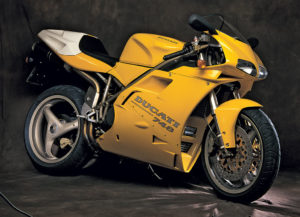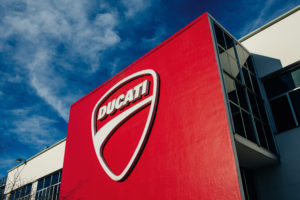A hundred years have passed since the birth in Lugo of the engineer
Engineer Fabio Taglioni was born in Lugo on September 10, 1920, acity that also gave birth to the aeronautical ace Francesco Baracca.
In homage to his famous fellow countryman, on some Ducati racing vehicles (such as the 100 cc that won many races) Taglioni put the famous rampant horse that later became the symbol of Ferrari.
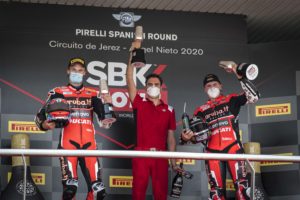
SBK a Jerez: avanti tutta!
A Jerez de la Frontera, seconda tappa del campionato SBK, si ri-accende lo spettacolo con Ducati protagonista. Doppietta di Redding e secondo posto in gara 2 per Davies.
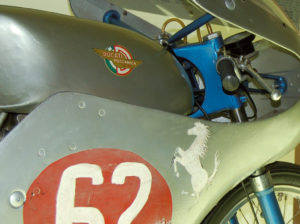
Il cavallino rampante su Ferrari e Ducati
Il cavallino rampante: l’intreccio di storie e aneddoti riguardanti il grande aviatore Francesco Baracca, Enzo Ferrari e la Ducati.
His passion for engines was born by attending his father Biagio’s workshop and for this reason he had decided to enroll in the scientific high school and later in engineering. After graduating in mechanical engineering in Bologna in 1948, late due to the war events, and participating in the Second World War in the autieri department, he had started teaching at the Technical Institute for Industrial Experts in Imola.
His passion for engines led him to carry out continuous experiments and projects and it was from one of these, realized together with his students, his first race engine came to life,which was then made materially by Ceccato. It was with this engine that engineer Taglioni made himself known, then having the great chance with mondial.
His first industrial experiences were done in Ceccato and Mondial, but the maximum technical results obtained them in Ducati,thanks to his particular conception of the desmodromic system,which remains very valid and still used today on the engines of the bikes of Borgo Panigale.
The initial fame, however, came from the Mondial 175,brought to the race by Tarquinio Provini, who obtained victories in the Giro d’Italia and the World Championship.
For this series of victories Dr. Montano,general manager of Ducati, immediately came the idea of hiring Taglioni and offered him very advantageous economic conditions and full freedom of design. Taglioni decided to take the big step, went to Ducati and it seems that already on the
It is obvious that Taglioni intimately wanted to show Mondial what design skills he had and how this one was wrong to let a world-class designer escape.
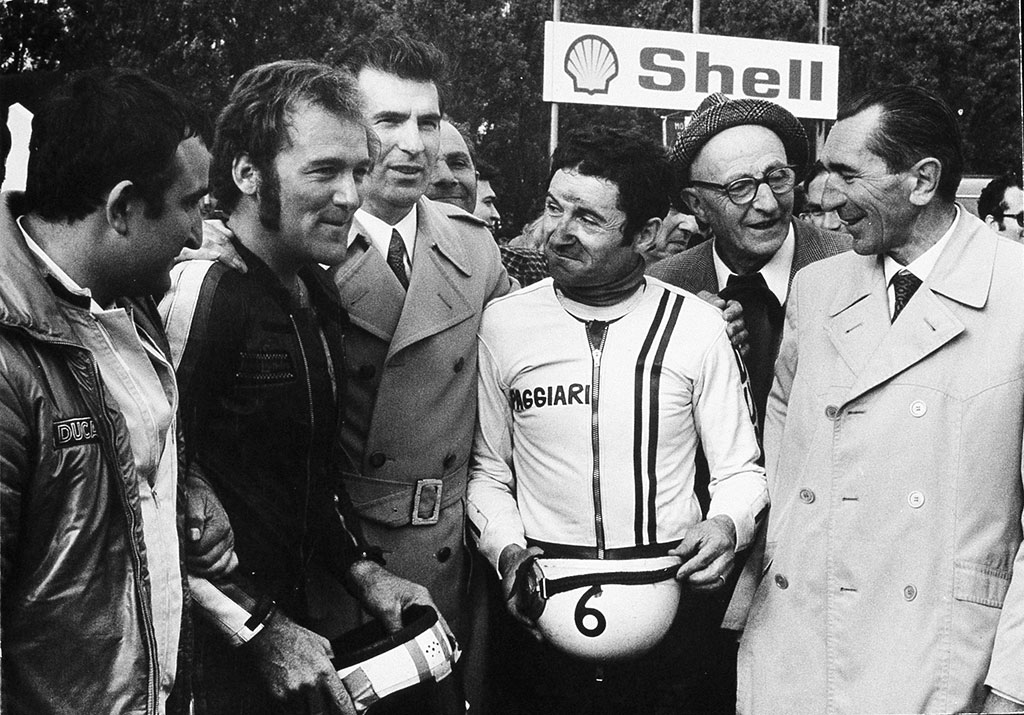
Its creative vein immediately gives life to ducati’s first real racing bike,the Gran Sport Marianna. In those years the races that attract incredible crowds are precisely those on the road, such as the Milan-Taranto and the Motogiro organized by the sports newspaper Stadio di Bologna.
Ducati’s general manager, Montano, immediately realized that each victory ensured a high jump in sales.
Thanks to his great experience and technical ability, Taglioni designed models such as the 100 cc and the 125 cc Marianna that made history in the World Championship, also touching the absolute title, as well as breaking nationally in motogiro and in all italian rankings.
The Gran Sport Marianna of 100 cc was therefore the basis from which to increase the displacement that materialised in 125 and 125 bialbero. Just two years after joining Ducati, the 125 GP Desmo debuts,a model that represents the future of the Casa di Borgo Panigale.
The 125 Desmo took to the track in Cesena, led by Degli Antoni, and finished in sixth place, but shortly afterwards he scored the victory in Sweden at Hedemora, a test that was not valid for the World Cup. Gandossi’s first iridescent success on the Spa circuit the following year.
Taglioni also designed an experimental 50 and the 175 that was to race in motogiro and milan-taranto, races that were suppressed. For this reason the 175 was hijacked on the World Tour with Tartarini and Monetti.
Taglioni then had the great idea of developing in an
The idea came to him by observing his wife sewing by car:he noticed that the arm that commanded the ascent and descent of the needle was in solidarity with the entire sewing system and that there were no dead spots or unnecessary clutches. This gave him the cue to design the desmodromic system that made the valve return control spring unnecessary.
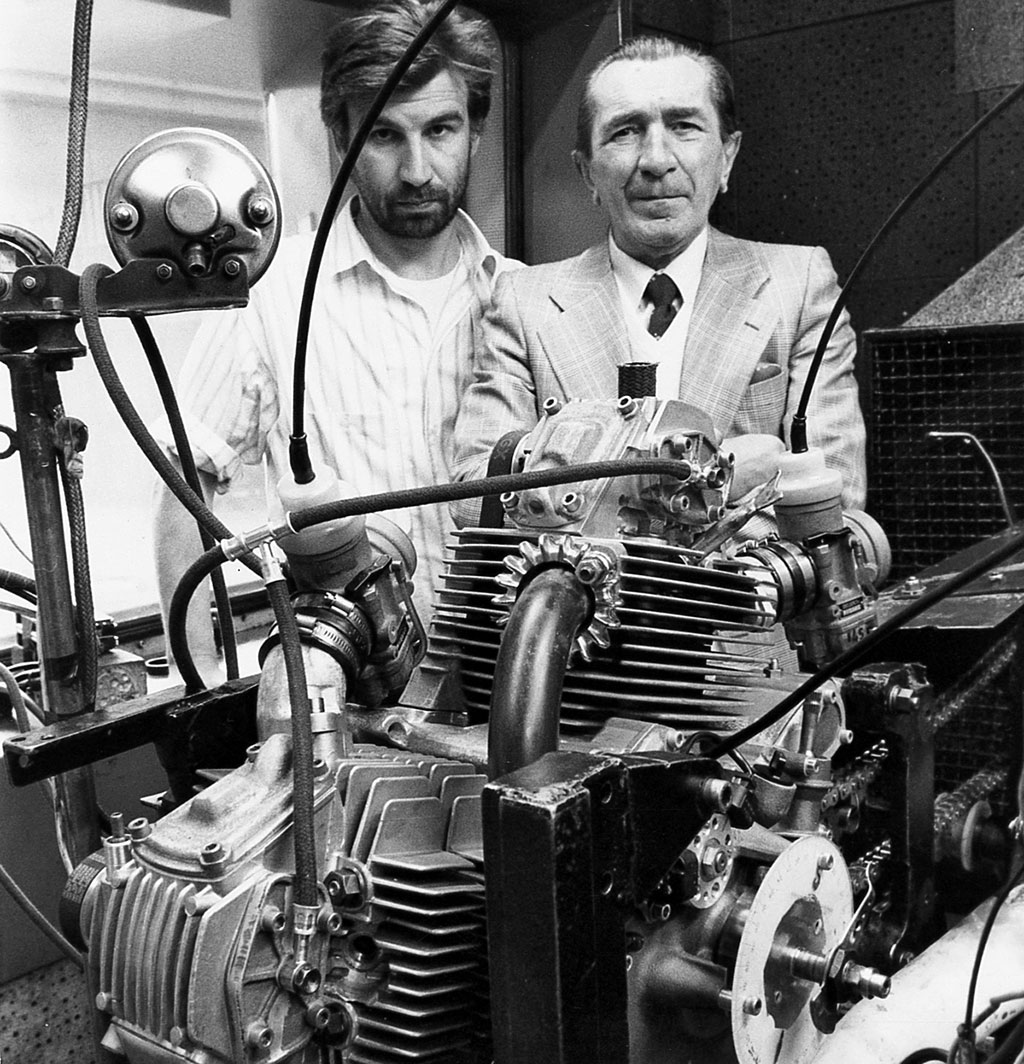
Taglioni was sensitive to novelty and open to any adventure, especially if it involved the use of some mechanical means; for this reason she always tried to put in every creation, from the race, but also in commercial products, a pinch of originality that could make her remember beyond the perfect mechanical functionality and optimal performance.
This also explains the great interest he has had for travel companies, such as the one realized, from 1957 to 1958, by Tartarini and Monetti on a Ducati 175 designed by Taglioni: the two made the entire tour of the world, covering 60,000 kilometers on all continents. The 175 cc was his creature, designed to win the Giro d’Italia Motociclistico and the Milano-Taranto, so he had personal reasons, in addition to the company ones, to hope that the Giro del Mondo was a great success. He followed daily the movements, the progress of the journey and even at home he told the most interesting aspects to his wife and children.
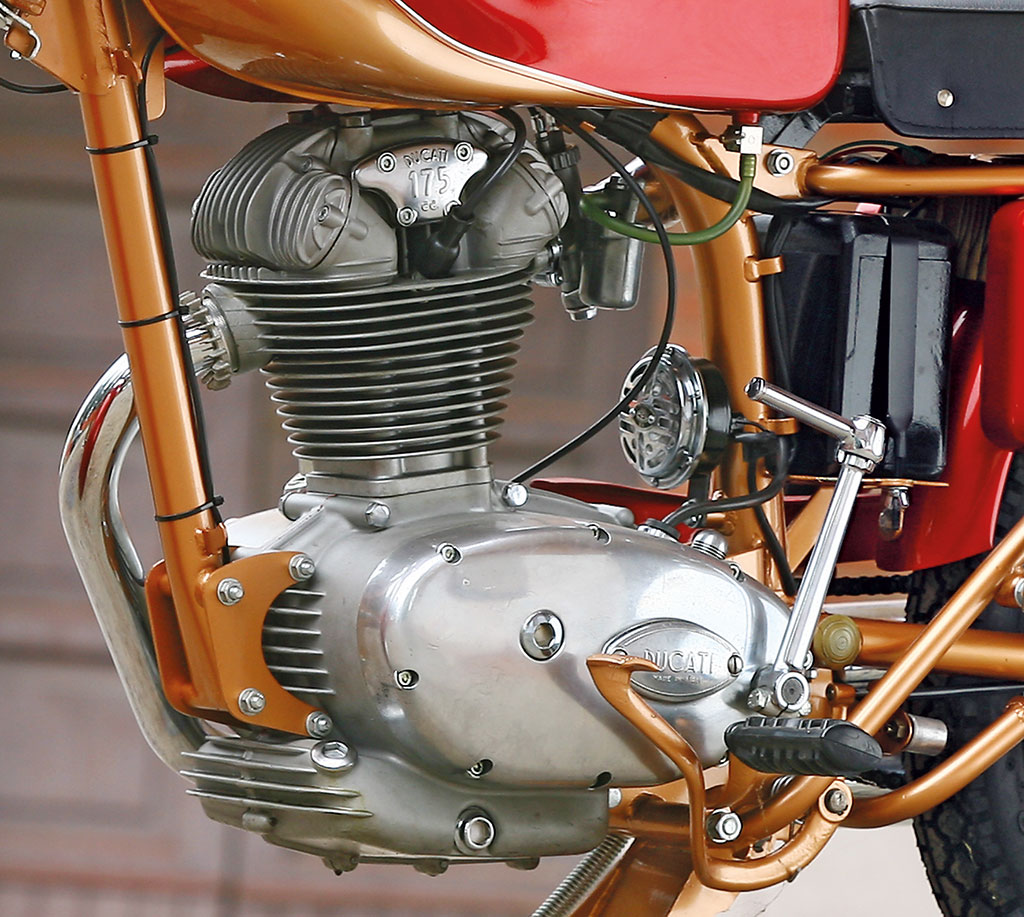
Taglioni soon realized that more powerful engines could be made by pairing those already available, that is, combining 100, 125 and 175 already well equipped in horses so as to have 200, 250 and 350 unbeatable.
He accepted the challenge and won it also thanks to the urging of Sir Stanley Hailwood, for whom he purposely built, for the benefit of his son Mike, a 250 cc desmodromic twin that was unrivalled and cleaned up titles in Britain.
The next step was a 350 cc, obtained by pairing two 175s, designed for Surtees and which, after an initial use by Hailwood,was sold to Ken Kavanagh, excellent Australian driver, former Norton, who thanks to the 350 dominated the Australian championship.
The decisive qualitative leap in the pairings took place thanks to the Desmo, because it allowed a higher rotation regime than that achieved by the competition. The small loss of power that arises from any coupling between lower displacement engines was thus easily overcome.
If the program had been carried out until its maximum development, Ducati would have been world champion in various displacements for many seasons.
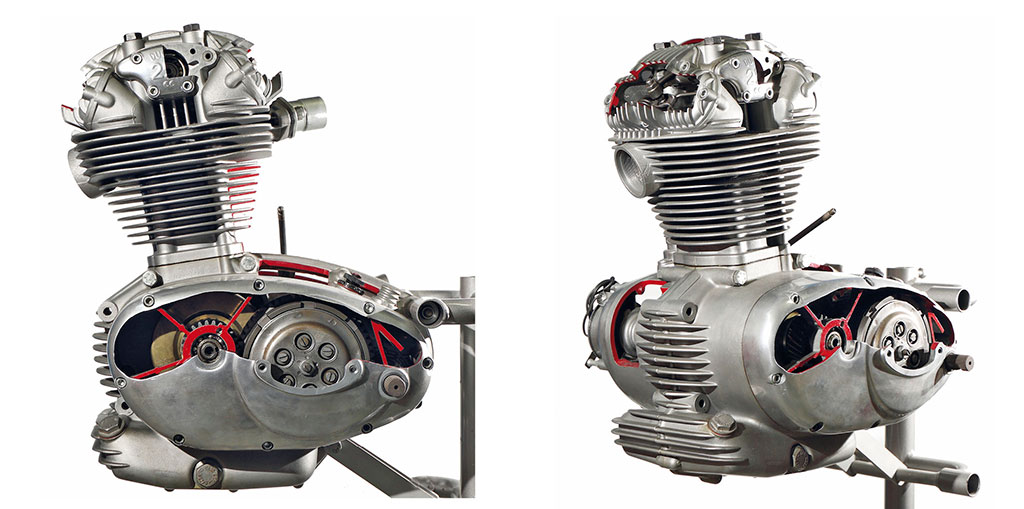
At this point, it’s easy to see how Ing. Taglioni was one of ducati’s most important and representative men, both for the importance of his technical inventions (he carried out about 1000 engine and motorcycle projects), and for the position he was able to instill in his working group.
Thanks to the commercial successes achieved, Taglioni was able to expand the Ducati range, following above all the requests coming from the USA of the importer Berliner:thus was born, at the end of 1967, the 350 Mark 3D, the first Road Desmo.
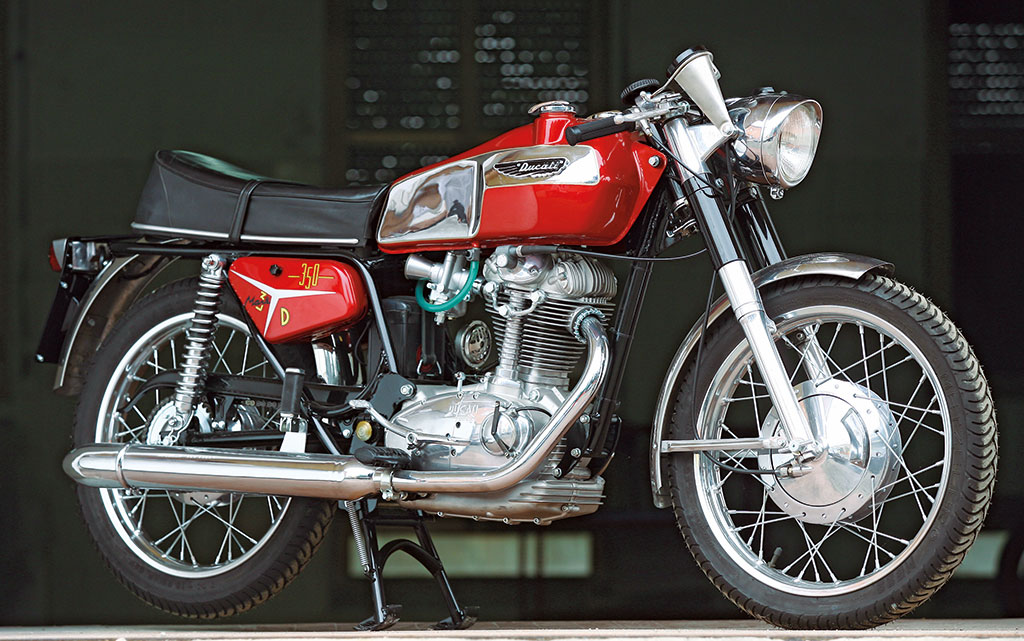
In 1969, in order to try to return
That engine, however, was the base of the 750 cc that will open the way of the in conical pairs for 15 years. The first version will equip the road 750 GT with spring valves and conical gear distribution, a real jewel of mechanics, then a 750 Sportwill be released, then the famous 750 SS Desmo today contested at stratospheric prices.
In the same way, Taglioni was due to the Pantah engine:in fact, in the mid-70s, a questionable choice removed from ducati production the single cylinders Mark and Scrambler,
replaced by parallel twin cylinders strongly
opposed by the Engineer.
The commercial flop was great and to put a piece of it, Taglioni was asked to find a solution.
At the end of 1978, the 500 Pantahwas introduced, a 90° inclined 15° L-twin engine, always with a camshaft on the head of desmo. What was new was the adoption of a toothed belt for distribution instead of expensive conical pairs.
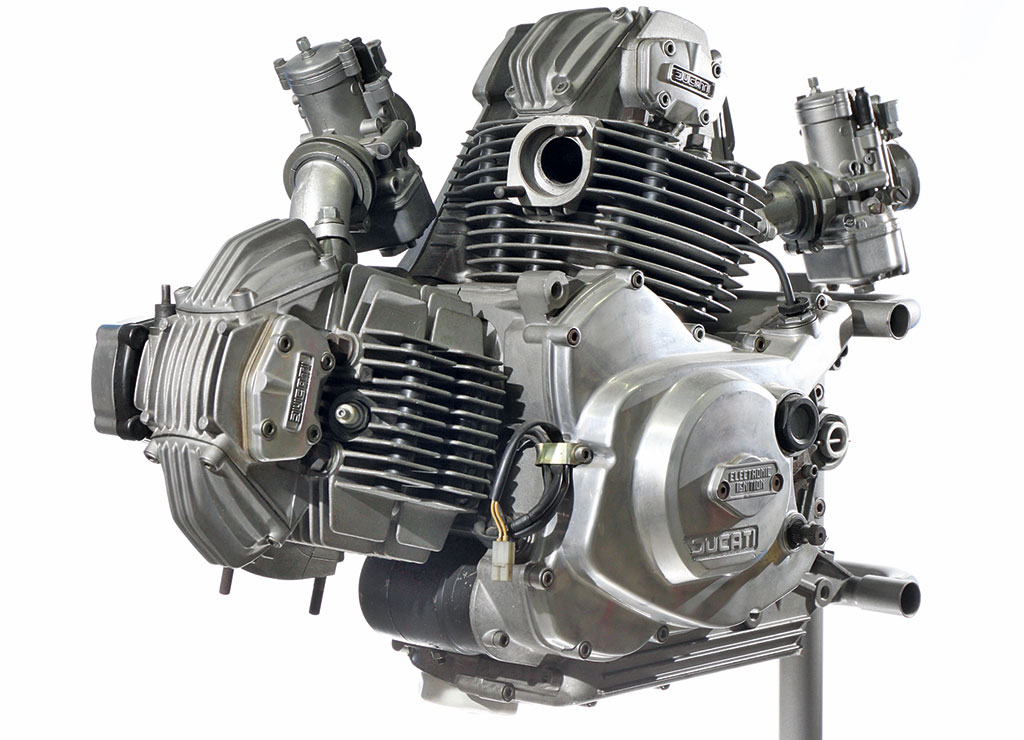
This engine, revised and updated to the techniques of the various periods in its many versions, is the longest-running in Ducati motor history and still equips current vehicles.
His position of great importance for almost 40 years at Ducati (after his retirement he collaborated until 1995) is also witnessed by an event: when the Texan fund TPG decided to buy the Bolognese brand, the top managers of the fund left Texas
By now all his energy was focused on the great love of his life, orchids,of which he had also made very interesting and innovative hybrids.
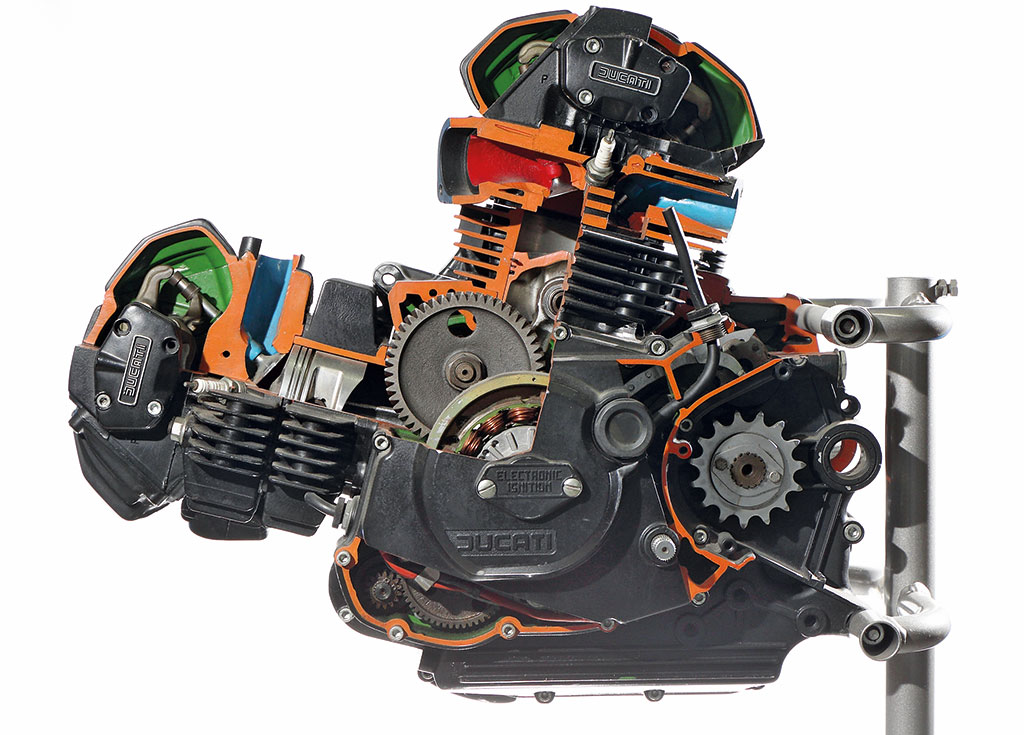
If today Ducati exists and has become a world reality much is due to Taglioni, because at the time of his entry into Ducati things were going very badly, the financial resources were in fact zeroed and, if jewels such as the 100 and 125 Marianna had not come out of his mind, which were most successful in the race and sales , almost certainly the Ducati Meccanica would have failed.
Same speech for the L-twin in its various versions, from conical pairs to pantah.
It should be emphasized, then, how Taglioni always remained faithful to Ducati,rejecting all the numerous offers that came to him, such as moving to MV: despite a stratospheric offer from Cascina Costa, he refused for the love he had for “his Ducati”.
Taglioni was so far ahead and appreciated in the world of racing mechanics that Ferrari also asked him for advice for the Testa Rossa 2000 Sport. He went to Maranello, spoke at length with Drake who gave him a copy of the new model’s designs, but then there were no interesting developments.
Ing. Taglioni died at his home in Bologna on
With the collaboration of Gianfranco Zappoli
Photo Enrico Schiavi and Ducati archive

SBK a Jerez: avanti tutta!
A Jerez de la Frontera, seconda tappa del campionato SBK, si ri-accende lo spettacolo con Ducati protagonista. Doppietta di Redding e secondo posto in gara 2 per Davies.
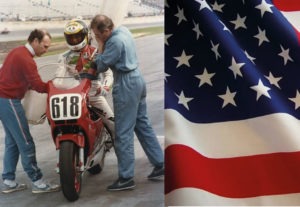
L’avventura a stelle e strisce di Ducati
Storia dell’avventura americana di Ducati, concretizzatasi dopo la Seconda Guerra Mondiale, tra successi sportivi e strategie commerciali.

